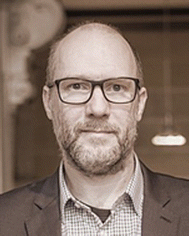Introduction to engineering the biosynthesis of fungal natural products
Russell J.
Cox
 a and
Tobias A. M.
Gulder
a and
Tobias A. M.
Gulder
 b
b
aInstitute for Organic Chemistry, BMWZ, Leibniz University of Hannover, Schneiderberg 38, 30167, Hannover, Germany. E-mail: Russell.Cox@oci.uni-hannover.de
bChair of Technical Biochemistry, Technische Universität Dresden, Bergstraße 66, 01069 Dresden, Germany
Abstract
Filamentous fungi are highly diverse eukaryotes that inhabit all known ecosystems on earth. Estimates suggest that more than 2 × 106 species are likely to exist, and analyses of typical fungal genomes suggest they harbour around 50 biosynthetic gene clusters on average. The biosynthetic potential of these organisms is thus vast. Fungi produce all the main classes of secondary metabolites, and numerous hybrid compounds. Many are highly useful in medicine such as the ‘classic’ special metabolites penicillins, cephalosporins, statins and mycophenolic acid, and new antimicrobial agents such as the pleuromutilins and enfumafungins that overcome specific patterns of resistance. Fungi differentiated from bacteria more than a billion years ago, so there has been plenty of time for uniquely fungal biosynthetic systems to evolve.
Biosynthetic studies in fungi, built on more than a century of studies, have reached a high level of sophistication. Seminal studies focused on compound isolation and fungi are still key organisms for bioactive metabolite discovery, especially from specific ecological niches, organism families and structural groups. Later, isotopic labelling studies, in vitro enzymology supported by chemical synthesis, and study of mutant organisms, pushed the field forward. In the past two decades significant advances in genome and transcriptome sequencing, and development of new and efficient molecular tools have extended these studies to include rational mutation and knockout procedures, and work to understand fungal biosynthetic pathways through gene and pathway expression in heterologous hosts. All this is now supported by much-improved informatic tools. Fungal biosynthetic studies are now entering a new age, where the long-held goal of engineering of fungal metabolic pathways is becoming possible at last.
This themed issue of Natural Product Reports focuses on the topics and techniques that underpin current pathway engineering in filamentous fungi. These engineering efforts are being piloted at all levels. The fungal enzyme systems that build terpene, polyketide, peptide and alkaloid skeletons are understood in increasing detail, such that these synth(et)ases can now be rationally manipulated. In the case of polyketide synthases this also includes a developing understanding of how iterative systems are programmed and controlled, and how trans-acting elements have important and subtle effects. Fungal peptides, both of ribosomal and non-ribosomal origin, have distinct features that are also opening up to understanding and engineering efforts. Likewise, fungi are an important source of terpenoids and meroterpenoids where significant progress has been made, particularly via heterologous expression.
Heterologous expression is developing as the key tool for both understanding and engineering fungal biosynthetic systems. Development of new tools, and new host organisms, that allow the rapid and rational expression and manipulation of fungal biosynthetic gene clusters (BGCs) is a core technology. In many ways this technology starts to compete with traditional synthetic organic chemistry for the production of fungal metabolites. Hand-in-hand with this, the deployment of CRISPR-CAS methods speeds-up the traditionally slow fungal molecular methods, and sets the scene for new ways of recombining fungal biosynthetic genes. Fungal secondary metabolites are often highly complex, and this complexity usually arises because of the action of redox tailoring enzymes catalyzing late-stage structural modifications. Major advances in understanding the 3D structures of these tailoring enzymes also now allows engineering of individual tailoring systems, such as the non-heme iron oxygenases.
The editors hope that this special issue will both summarize recent progress, and also act as a stimulus for deepening knowledge and innovation in the area of engineering fungal specialized metabolites. Significant technological problems faced by humanity, including man-made climate change and the need to prevent carbon emissions, means that such methods that build on the inherently low-carbon processes of fungal fermentation will become of increasing importance in the future, for the provision of bioactive high value metabolites and as an alternative to often tedious total synthesis. Our growing understanding of fungal biosynthetic processes will even strongly impact the synthetic field in the future by expanding the available (bio)catalytic toolbox for complex small molecules synthesis with native and engineered fungal biosynthetic enzymes.
| This journal is © The Royal Society of Chemistry 2023 |


